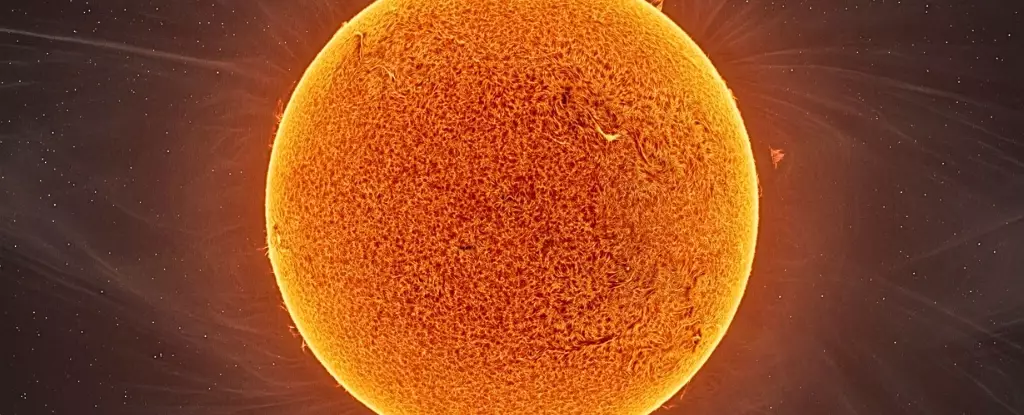The universe often speaks in languages we are yet to decipher. Among its most intricate dialects lies the phenomenon of starquakes, a breathtaking manifestation of cosmic activity that echoes through the vast emptiness of space. Recently, groundbreaking research has illuminated how these cosmic vibrations—born from the chaotic bursting of gas bubbles on the surfaces of stars—can act as sonic beacons, revealing profound insights into a star’s life history and the evolution of our galaxy.
This transformative study, illuminated by the Revoultionary Kepler Space Telescope’s K2 mission, dives into the mysterious soundscapes produced by stars in the M67 star cluster, situated nearly 3,000 light-years from Earth. The researchers’ findings suggest that we may have only started to scratch the surface of understanding these stellar symphonies, which carry echoes of their tumultuous pasts.
The Complexity of Stellar Voices
The concept of stars singing may initially sound like a fanciful metaphor, yet the reality is far more profound. Just as human beings have unique vocalizations shaped by physiology, temperature, and emotional state, stars, too, possess their own distinctive melodies. These rhythms are born from vibrations—peculiar resonances created as gas bubbles ascend and burst on the star’s surface, sending ripples through their entire structure.
To the untrained eye, the fluctuations in a star’s brightness might seem trivial, but for astronomers, such nuances are filled with potential information. With meticulous observation of pulsations at specific resonant frequencies, scientists listen to the “song” of a star, unlocking a treasure trove of knowledge about its composition, age, and developmental journey. The discoveries surrounding these frequencies challenge long-held assumptions about stellar evolution, particularly with giant stars that once seemed enshrouded in enigma.
A Fresh Perspective on Stellar Evolution
The findings from M67 have significant implications, particularly concerning our understanding of hydrogen burning within stars. While younger stars like our Sun provide clues about their hydrogen reserves through specific frequency patterns, the nature of older giants has traditionally been viewed as less transparent. For years, researchers thought that the subtle differences in resonant frequencies—referred to as “small spacing”—offered little new information about these aging celestial bodies.
However, the new evidence reveals otherwise. As researchers began to measure the frequency signatures of stars in M67, they stumbled upon changes in the characteristics of these vibrations that correlate with the variations in a star’s internal fusion processes. This stalling of frequencies at a critical point reveals a significant transformation within a star’s structure—a moment where the outer layer thickens, fundamentally altering how sound waves navigate its depths. It is as though the star reaches a pivotal crossroad where its turbulent history presses against the boundary of its explosive future.
Decoding Galactic Histories
Drawing parallels to seismic activity on Earth, where earthquake waves reveal geological structures, starquakes provide a glimpse beneath the surface of stars. Each star serves as a cosmic time capsule, documenting not only its own evolution but also reflecting the myriad influences of its environment. The Milky Way has amassed a complex history, shaped by the violent merging of smaller galaxies, each collision birthing a unique tapestry of stars with diverse origins.
Through the meticulous analysis of clusters like M67, astronomers can begin reconstructing a more nuanced story of our galaxy’s formation. The ability to accurately date and classify stars through their vibrational signatures enhances our understanding of cosmic development. Just as studying trees can unveil a climate’s past, so too can the histories etched within stars offer insight into the unfolding narrative of our vast cosmic neighborhood.
Imprints for the Future
Understanding these melodies of starquakes not only enriches our appreciation for the cosmic ballet of stars but serves as a more tangible reminder of our own solar system’s fate. As we peer into the enigmatic life cycles of stars, we gain foresight into the future of our Sun and the inevitable transformations it will undergo over billions of years.
In an era where scientific inquiry is most illuminating when combined with technology, we find ourselves with a new tool. The data collected over years of seismic observations across the Milky Way should not be discarded but revisited with fresh perspectives. By listening closely to the cosmic harmonies, we can unveil layers of history we once could only speculate about, transforming our understanding of the universe itself.
In recognizing the profound significance of starquakes, we shed light on the very essence of existence—a cosmic interlude that speaks to the interconnectedness of all things, urging humanity to remain curious and engaged with the cosmos that birthed us.


Leave a Reply